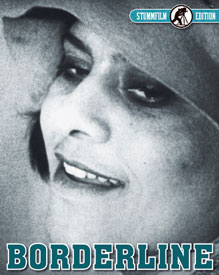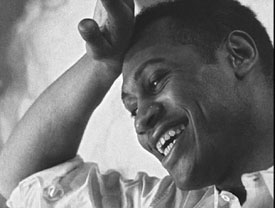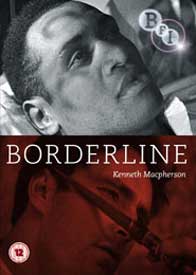 Borderline (1930) was a starring vehicle for Paul Robeson & his wife Eslanda Robeson, filmed by Brits in Switzerland. It's an independent silent film production funded by a group of white intellectuals, as a commentary against racism.
Borderline (1930) was a starring vehicle for Paul Robeson & his wife Eslanda Robeson, filmed by Brits in Switzerland. It's an independent silent film production funded by a group of white intellectuals, as a commentary against racism.
The white figures of the film are members of the Close Up Collective, including intellectual film critic & lefty Robert Herring, Winifred Ellerman who became a well-known novelist under the nom de plume "Bryher," & Hilda Doolittle who would later publish as "H.D."
The goal of the Collective, who wrote pompous film criticism for their journal Close Up (1927-1933), was to transform the commercial medium of cinema into a higher art form with social relevance.
Modernly praised for its psychological realism, fact is the film is a mess, very hard to follow for the first half of its length, with avant gardism its excuse for not being well made. Eventually some of its themes begin to sort themselves out & become more or less obvious, but it's hard going for the first half with editing so confused that it seems an abysmal piece of surrealism (not impressionistic as some have suggested, as impressionism is easily comprehended whereas this film is chaotic).
Restored as much as is possible by Eastman House, the confusing structure may be in part due to lost footage. It has been given a modern musical soundtrack composed for the occasion by British jazz saxophonist Courtney Pine.
 Others will have to judge if it's good jazz, but as a film score, Pine really didn't care what was happening on the screen. Others will have to judge if it's good jazz, but as a film score, Pine really didn't care what was happening on the screen.
Pine's music is off in its own realm never matching up to the film images or character actions & emotions. It's ultra annoying & the film is magically improved by turning the soundtrack off.
During the confused beginning of this moody, experimental, but in the main nonsensical movie, we are treated to meaningless images of angry faces, phone calls, dancing. There's a dykey cigar-smoking woman (Bryer, who really was gay). Another white woman is admiring Pete (Robeson), while Adah (Mrs. Robeson) looks ticked off. A lively jazz club is glimpsed in quick shots.
Pete in his room has a nice dream about Adah, but then leaps up & looks around suspiciously. Cigar dyke sees him as he goes for a walk. And there's a cat.
He strolls toward the village, catching up with Adah. Wind blows his pantlegs. As they gaze at one another, his sadness fades.
It meanders on & on very tediously but there are nice portraits of young Robeson & that's something. The cigar-chomping gal has a girlfriend (Charlotte Arthur), so her lesbianism isn't just implied, it's an actual case of avowed homosexuality in the silent cinema.
A white nutter, Thorne (Gavin Arthur), loves Adah, or desires her to the point of obsession, though she of course loves Pete. Thorne's wife Astrid (Hilda Doolittle) is distrought to the point of insanity, & Thorne is deplored by a repellant old woman as only a "nigger lover."
The theme becomes increasingly obvious, a beautiful black couple who belong together & love one another, but exploited sexually. White folks are all crazy, deviant, drunken, drug-using, & generally revolting; I can see the Close-up Collective congratulating themselves on that one.
The idiotic white couple have an accidentally comical knife fight in which Astrid gets the upper hand, but then she dies anyway, hard to tell why. In the end it's the Pete & Adah who have to leave the crappy village.
One has to work hard to comprehend the type of liberalism that existed at the time, which has white, effete do-gooder lefties projecting the idea that all white folks are bad, black folks more likely to be innocent.
But it's not really kneejerk liberalism at all. There's nothing new in the notion that the negro, like small children, are innocents. And the overriding message in this mess of a film is that the mixing of the races -- which the "Borderline" behavior alluded to by the title -- leads inevitably to tragedy, up to & including madness & murder. It's ultimately pro-segregation. But I suppose even just acknowledging that those with all the power do all the harm is something.
copyright © by Paghat the Ratgirl
|

